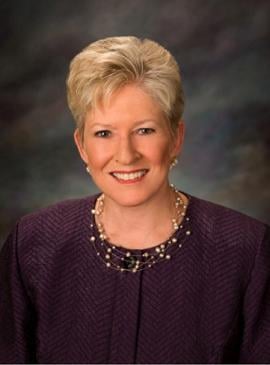2012 was a big year for the science of snipping DNA to introduce genetic changes into a cell, also known as genome editing. Though Science magazine hailed two new techniques for selectively cutting and pasting DNA in the field of genome engineering as together constituting one of the Top 10 scientific breakthroughs of the year, those methods may already have been surpassed by researchers at the University of California Berkeley using RNA and a single protein. Faster, simpler, and cheaper, the UCB team led by Dr. Jennifer Doudna published initial results of their work genetically modifying bacteria using the RNA-based DNA cleavage technique last summer. The response from the the life science community was extremely positive, with reviews calling it a "tour de force" and a "a real hit," according to the latest press release. Now three more papers are coming out based on the work of the Doudna Lab showing that the RNA programming technique using a bacterial enzyme known as Cas9 is equally effective in making alterations to human genes.
Tags: 2014, CA, 2013, University of California Berkeley, AIDS Research, Molecular Engineering, gene therapy, Southwest, California, University of California, genetic engineering, Berkeley, BioResearch Product Faire Event, Harvard, genomics research, UC Berkeley, UCBerk
The southernmost tip of the great state of Texas is known as the Rio Grande Valley (see map below), and University of Texas Chancellor Francisco G. Cigarroa is campaigning hard for the establishment of a South Texas School of Medicine, to be part of a new regional University of Texas research campus. UT already has two smaller campuses in the Rio Grande Valley, in Edinburg and Brownsville; mid-way between those two border cities is Harlingen, which is currently home to a Regional Academic Health Center that, under the Cigarroa plan, would become a full-fledged medical school. The new UT university campus would incorporate both the Brownsville and Edinburg college campuses, but with greater resources available to strengthen its research capacity. UT System Board of Regents voted to approve both plans last month. The next step is to convince the state legislature to give its support.
Tags: 2014, 2013, University of Texas, Texas Medical Center, Texas, Southwest, UTAust, UT Health Science Center San Antonio, UTxSA, University of Texas Health Science Center, Austin, College Station, TAMU, tmc, BioResearch Product Faire Event, San Antonio, Houston, Front Line event, TX, Texas A&M, new facilities, Southwest Region
Each year millions of Americans risk undergoing surgery for a variety of problems such as organ transplants, mending broken bones and cosmetic surgeries. Often surgery is necessary to fix ongoing health problems with the benefits of the surgery usually outweighing the risks. Despite the potential risks to surgery patients, in the United States more than 48 million surgeries are performed each year. In most cases, undergoing surgery is relatively risk free, but not always.
Tags: 2014, Bioscience research, 2013, biomedical research, University of Colorado, Medical Research, Drug Discovery, DNA Research, Southwest, National Jewish Health, Anschutz Medical Campus, BioResearch Product Faire Front Line Event, BioResearch Product Faire Event, Denver, CO, public health, NJH, Fitz, Aurora
 An historic collaboration between the University of California Davis and China's BGI, the world’s largest genomics organization, has dramatically increased the University's genome sequencing capabilities and promises to open up altogether new research opportunities in the life sciences community with genomic studies of plants, animals, humans and microbes. The new joint endeavor is called BGI@UC Davis and will benefit both UCD and China's first citizen-managed, non-profit research institution.
An historic collaboration between the University of California Davis and China's BGI, the world’s largest genomics organization, has dramatically increased the University's genome sequencing capabilities and promises to open up altogether new research opportunities in the life sciences community with genomic studies of plants, animals, humans and microbes. The new joint endeavor is called BGI@UC Davis and will benefit both UCD and China's first citizen-managed, non-profit research institution.
Tags: 2014, University of California Davis Medical Center, 2013, University of California Davis, New research facilities, Southwest, California, University of California, UCDMC, BioResearch Product Faire Event, Genomics, genomics research, Sacramento, Davis, Sacramento Campus, UCD
 If Dr. Seuss were still writing his wonderous books and turned his attention to biotechnology today, we might see a title like Ah, the Things You Can Do With Algae! At the University of California San Diego a number of research institutions have joined together to form the San Diego Center for Algae Biotechnology (SD-CAB) where scientists are pursuing all sorts of innovative projects using the ubiquitous green matter that also happens to be a genetic model organism. Which means it is not only easy to grow, but it can do things that bacteria and even mammalian cells can't, like host a genetically engineered protein that targets cancer.
If Dr. Seuss were still writing his wonderous books and turned his attention to biotechnology today, we might see a title like Ah, the Things You Can Do With Algae! At the University of California San Diego a number of research institutions have joined together to form the San Diego Center for Algae Biotechnology (SD-CAB) where scientists are pursuing all sorts of innovative projects using the ubiquitous green matter that also happens to be a genetic model organism. Which means it is not only easy to grow, but it can do things that bacteria and even mammalian cells can't, like host a genetically engineered protein that targets cancer.
Tags: CA, University of California San Diego, cancer research, cell biology, Southwest, California, 2012, biology research, UCSD, Biotechnology Vendor Showcase, San Diego Biotechnology
 In an attempt to shore up both the reputation and functionality of the nations's largest state-funded cancer agency, officials at the Cancer Prevention and Research Institute of Texas (CPRIT) just announced the appointment of Dr. Margaret Kripke as the agency's new chief scientific officer. The embattled agency has faced accusations from many of its key scientists that irregularities and favoritism in the funding process have undermined their scientific credibility and put commercialization above research.
In an attempt to shore up both the reputation and functionality of the nations's largest state-funded cancer agency, officials at the Cancer Prevention and Research Institute of Texas (CPRIT) just announced the appointment of Dr. Margaret Kripke as the agency's new chief scientific officer. The embattled agency has faced accusations from many of its key scientists that irregularities and favoritism in the funding process have undermined their scientific credibility and put commercialization above research.
Tags: cancer research, women in science, Texas A&M University, Texas Medical Center, Texas, Southwest, 2012, College Station, BioResearch Product Faire Event, Funding, Houston
 Yesterday we looked at two biologically inspired engineering experiments out of the Wyss Institute in Boston. Today we're on the West Coast at the University of California Santa Barbara's Institute for Collaborative Biotechnologies (ICB) marvelling over another technology that takes its cue from the biological world. It's a microfluidics device designed to function much like the super-sensitive nose of a dog, and it's already being commercialized for use in bomb detection, though other applications could include bio/chemical detection in industrial and healthcare settings as well. Results of the research gauging bomb detection accuracy specifically were published recently in an article in the journal Analytical Chemistry.
Yesterday we looked at two biologically inspired engineering experiments out of the Wyss Institute in Boston. Today we're on the West Coast at the University of California Santa Barbara's Institute for Collaborative Biotechnologies (ICB) marvelling over another technology that takes its cue from the biological world. It's a microfluidics device designed to function much like the super-sensitive nose of a dog, and it's already being commercialized for use in bomb detection, though other applications could include bio/chemical detection in industrial and healthcare settings as well. Results of the research gauging bomb detection accuracy specifically were published recently in an article in the journal Analytical Chemistry.
Tags: CA, Lab-on-a-chip Technology, Southwest, California, 2012, University of California Santa Barbara, Biotechnology, Front Line event, UCSB, Santa Barbara
 For both dairy and beef production, cows are an important part of the US economy and food supply. When they get sick, it's bad for business (and not too pleasant for the cow). The most common illness in cattle is Bovine Respiratory Disease (BRD), which accounts for losses of more than $690M annually in the US alone. To combat this threat to bovine health and productivity, the USDA has recently awarded a $9M 5-year grant to researchers at Texas A&M University's College of Veterinary Medicine and Biomedical Sciences, in collaboration with colleagues at the University of Missouri, to study genetic selection for breeding more disease-resitant stock. A second $5M grant will go towards research into feed efficiency, again with the aim of breeding heartier, healthier, and more profitable animals.
For both dairy and beef production, cows are an important part of the US economy and food supply. When they get sick, it's bad for business (and not too pleasant for the cow). The most common illness in cattle is Bovine Respiratory Disease (BRD), which accounts for losses of more than $690M annually in the US alone. To combat this threat to bovine health and productivity, the USDA has recently awarded a $9M 5-year grant to researchers at Texas A&M University's College of Veterinary Medicine and Biomedical Sciences, in collaboration with colleagues at the University of Missouri, to study genetic selection for breeding more disease-resitant stock. A second $5M grant will go towards research into feed efficiency, again with the aim of breeding heartier, healthier, and more profitable animals.
Tags: Texas A&M University, Texas, veterinary medicine, Southwest, 2012, animal science, College Station, TAMU, BioResearch Product Faire Event, Texas A&M Research, Genomics, Genetics, Texas A&M
The University of California system has five biomedical campuses currently: San Francisco, San Diego, Los Angeles, Irvine, and Davis/Sacramento. While each campus maintains a certain autonomy, the advantage to being part of a unified, statewide system is especially apparent when it comes to sharing resources such as biospecimens. In research studies that require data from large numbers of human blood or tissue samples, for instance, scientists rely on biobanks: an organized collection of human biological material and associated information stored for one or more research purposes.
Tags: CA, University of California Los Angeles, University of California San Francisco, Bioscience research, Bioresearch, Translational Research, Southwest, California, University of California, 2012, Los Angeles, San Diego, San Francisco, BioResearch Product Faire Event, Biotechnology Vendor Showcase
The California Institute for Regenerative Medicine (CIRM) has just celebrated the opening of its latest state-of-the-art research labs, at UC Santa Barbara's Center for Stem Cell Biology and Engineering. The new labs are located in the Bio II Building next to the Life Sciences Building on the eastern edge of campus. The 10,000sf, $6.4M wholesale renovation has taken about 5 years to go from concept to full realization. All funding came from CIRM or private donations, to allow faculty the flexibility to study the full range of stem cell technologies, without regard to federal funding limitations. The new Center is part of the Neuroscience Research Institute at UCSB.
Tags: CA, Stem cell research, New research facilities, new science wet labs, Southwest, California, 2012, University of California Santa Barbara, Funding, Front Line event, UCSB

